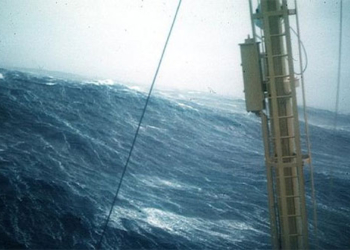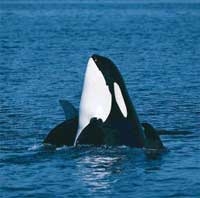New 3D Model of the Megalodon Shark Reveals It Could Prey on 8-Meter-Long Targets Like Modern Orcas.
The Megalodon Shark (Otodus megalodon) was reconstructed to be 16 meters long and weigh over 61 tons. It is estimated that this creature swam at a speed of 1.4 m/s, required more than 98,000 calories per day, and had a stomach capacity of nearly 10,000 liters. These findings indicate that the Megalodon could swim long distances and consume prey up to 8 meters long, comparable to the size of modern orcas, the top marine predators today. This discovery comes from an international study by the University of Zurich published on August 17 in the journal Science Advances.

Simulation of the Megalodon Shark hunting whales in the primordial ocean. (Photo: J.J. Giraldo)
Experts were able to conduct the research thanks to a 3D model of a Megalodon specimen discovered in the 1860s. Most of the vertebrae of the creature were preserved in fossils after it died in the waters off Belgium at the age of 46, approximately 18 million years ago.
“Shark teeth are common fossils due to their hard composition, which allows for good preservation,” said Jack Cooper, the lead researcher from Swansea University. “However, shark bones are made of cartilage, so they rarely fossilize. Therefore, the Megalodon vertebrae at the Royal Belgian Institute of Natural Sciences is a unique fossil.”
The research team, consisting of scientists from Switzerland, the UK, the USA, Australia, and South Africa, first measured and scanned all vertebrae before reconstructing the entire spine. They then integrated the spine into a 3D scan of the Megalodon’s teeth from the USA. The researchers completed the model by adding “flesh” around the skeleton, based on a 3D scan of a great white shark from South Africa.
“Weight is one of the most important characteristics of any species. For extinct animals, we can estimate body mass using modern digital 3D modeling, and then establish relationships between mass and various biological traits such as speed and energy consumption,” shared John Hutchinson, a professor at the Royal Veterinary College in the UK.
The high energy demand could be met by consuming the calorie-rich blubber of whales. According to the model, digesting an 8-meter-long whale could enable the Megalodon to swim thousands of kilometers across the ocean without needing to feed for two months. The completed model can now serve as a foundation for further reconstruction and study. The research results help experts better understand the role of large animals in marine ecosystems and the large-scale consequences of their extinction.




















































